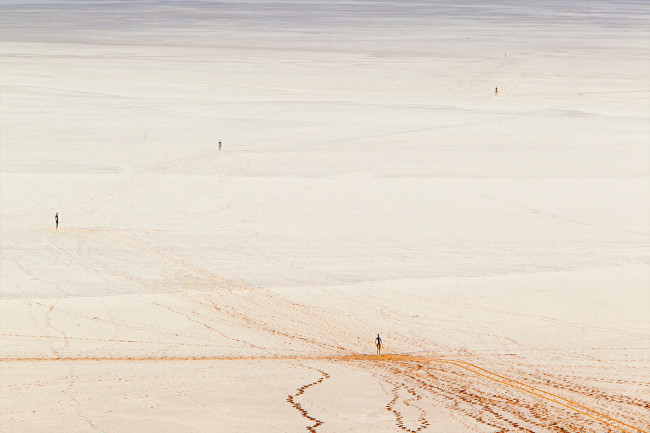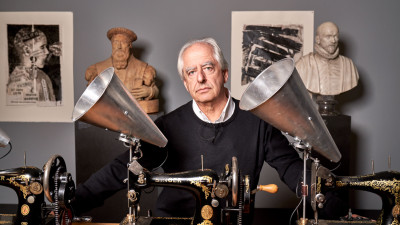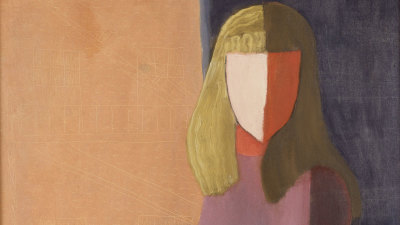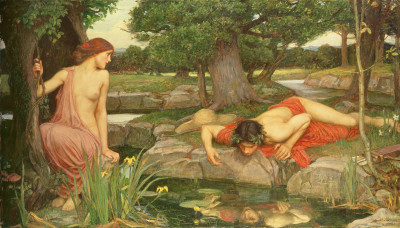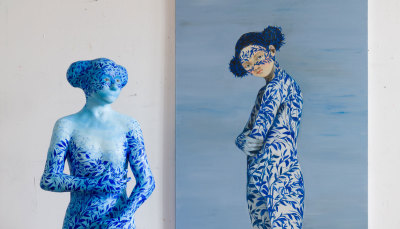Antony Gormley: 10 works to know
Antony Gormley: 10 works to know
By Amy Macpherson
Published 15 August 2019
From chewing his way through 600 loaves of bread to making the world’s largest angel, Antony Gormley has never been afraid to pull out all the stops in the name of art. As we prepare for his biggest UK exhibition in over a decade, here are 10 works you need to know from across his career.
-
-

1. Bed, 1980-81
Bed was one of the first works Antony Gormley made after graduating from the Slade, and it was shown soon afterwards in his first solo exhibition at London’s Whitechapel Gallery. Like later works based on casts of his own body, Bed bears the imprint of the artist’s form, but rather than being cast or moulded, it was chewed into being. Gormley chomped his way through thousands of slices of bread, which he and his wife Vicken Parsons then preserved in wax and assembled. The result was two slabs – together, roughly the size and shape of a king-size mattress – each with half a Gormley-shaped cavity in the centre.
Why Bed, and why bread? Throughout most of human history, bed is where life has begun and ended. Bread is one of the most basic and universal foods, and in Christianity (Gormley was raised a Catholic), it symbolises the body and spirit of Christ, consumed during holy communion. Bed also came out of Gormley reflecting on what art and life have in common. “Traditionally, a sculptor imposes the products of mind on matter, creating beauty out of a raw material,” he told the Guardian in 2012. “I came to the realisation that this is what our bodies do the whole time: we are constantly transforming one state of matter into another. We’re all doing sculpture backwards, turning matter into mind.”
-
-
-

2. Three Ways: Mould, Hole and Passage, 1981-82
As an art student, Gormley had been influenced by an earlier generation of American sculptors – Minimalists like Carl Andre and Donald Judd, who used found objects or industrial materials, and Land Artists like Robert Smithson, who took sculpture out of the gallery and into the natural world. But Gormley came to realise that he wanted to find a space for the body in his art: not as an illustration of any body in particular, but as a touchpoint for the universal experience of being human. It was while working on Bed that Gormley first had the idea of using his own body.
Mould was the first of what he calls his “body-case” works. As its title suggests, it actually contains a void imprint of his body – the work is a plaster mould covered in sheets of beaten lead soldered together. He followed Mould with two other works made by the same process. The soldering lines reveal how they were made, and holes through the body’s orifices reveal the emptiness inside – a key part of the work. It suggests the body as a container, a place to be lived in. The choice of his own body was not intended to be a self-portrait – it was simply because it was available. As Gormley has said, borrowing the language of conceptual art: “Here is this thing I actually happen to inhabit. Can I treat that as a found object?”
-
-
-

3. Another Place, 1997
By the late 1990s, Gormley had developed his body-case technique, and had begun to cast solid figures in iron. The first step was to wrap himself in clingfilm and then have his body wrapped in plaster soaked in scrim– holding his pose for well over an hour as the plaster set. It’s a feat of endurance for which he was well-trained. Years earlier, travelling around the Middle East and Asia, he had studied Buddhist Vipassana meditation – a practice that involved sitting for 12 hours a day in focused stillness.
The 100 cast-iron figures of Another Place were first created for a beach in Germany, before moving to Norway and Belgium. The figures arrived at Merseyside’s Crosby Beach as part of the fourth Liverpool Biennial in 2005 – scheduled to stay for 18 months, but, due to their enduring popularity, they’re still there today, gazing out to sea.
-
-
-

4. Angel of the North, 1998
Standing 20 metres tall and with the wingspan of a Jumbo jet, Angel of the North towers over the A1 motorway near Gateshead. Gateshead Council’s brief was for an artist to create a monumental work that captured the character of the region – and for Gormley, the location on the former site of a coal mine was a deciding factor in taking the project on. “I wanted to make an object that would be a focus of hope at a painful time of transition for the people of the North East, abandoned in the gap between the industrial and the information ages,” he’s explained.
Gormley’s design was based on his own torso, but with “wings” – angled slightly forward, as if leaning into the wind. Made from 500 tonnes of steel and concrete (60% of which is buried, iceberg-like, below the ground), the sculpture was fabricated in nearby Hartlepool. When the convoy of trucks carrying the finished torso and wings made the painstakingly slow, five-hour journey to the site, thousands of cheering and waving onlookers lined the route. Over 20 years later, the sculpture is visited by 150,000 people each year – and seen by a further 33 million passing motorists.
-
-
-

5. Field, 1989-2003
In 1983, Gormley travelled to Mexico, where he visited Anahuacalli, the museum Diego Rivera built for his collection of pre-Hispanic, ceramic sculptures. This inspired him to work in clay, and a few years later he sketched out the first ideas for a work called Field – featuring a sea of small human-like figures, each modelled by hand. Gormley knew that working on this scale would require help, and the idea of harnessing the “certain kind of energy” that communal activity generates was an important aspect.
At first, Gormley recruited friends and neighbours to help him make 150 of the little figures in his Peckham studio. Then in Sydney, Australia, he worked with art students to make more than 1,000. The next version took him back to Mexico, and a new scale of production – a rural community of brick-makers creating 35,000 of the figures, which were shown in New York to critical acclaim. Since then, different Fields have been created with communities all over the world, from the Amazon to Merseyside, taking, as the artist has said, “the earth of a continent and registering the touch of the people that live upon it, allowing it to become a witness of us, the living”
-
-
-

6. Inside Australia, 2003
In 1979, on a road trip across the USA, Gormley and his wife Vicken Parsons visited Walter De Maria’s The Lightning Field, a vast work of Land Art in the desert of New Mexico. The work had a profound impact on Gormley, as he told Martin Caiger-Smith: “It was an incredible moment for me – the feeling of space, and the fact that the work was completely indistinguishable from where it was […] a sort of acupuncture of the landscape.”
The Lightning Field has echoes in Gormley’s Inside Australia, in which 51 cast iron body-forms range across 10km of salt-encrusted lake bed in Western Australia. Gormley worked with people from the former mining community of Menzies, who volunteered to have their bodies digitally scanned. From these, he created what he calls an “insider” – body volumes pared-down to the core, the same height, but only a third of the mass, of the original subject. The result is a concentrated essence of the human form, not unlike the stick figures of paleolithic cave paintings.
Inside Australia is designed to be experienced slowly, and on foot, Gormley says. “As people move across the work, they leave a tracery or drawing of connecting lines between the works across the sharp whiteness of the lake,” he explains. “This is a sign of the viewers’ participation in the work which changes, as does the sky, throughout each interval of the year”.
-
-
-

7. Clearing, 2004-2019
Gormley’s drawing studio is on the top floor of his studio complex near London King’s Cross, an intimate space that’s separate from the vast workshops where his large-scale works are created. Drawing – with a range of tools, from pencils to calligraphy brushes and even etching tools called burins – is an important part of his work. It’s often an end in itself as well as a way for him to formulate ideas, some of which later evolve into sculptural or other works, or relate to works that already exist.
Clearing is a single line made up of several kilometres of square aluminium tubing without beginning or end. It’s a “drawing in space” which loops and coils around the gallery, contained by the floor, walls and ceiling. Gormley has made a number of drawings with the same name.
Like Inside Australia, Clearing is a work in which the viewer’s participation is essential to both the experience and the meaning. Moving in and around the loops of metal gives visitors a new way of engaging with and understanding the gallery space, and their own bodies within it.
-
-
-

8. Blind Light, 2007
Blind Light was the centrepiece of Gormley’s acclaimed 2007 exhibition in London’s Hayward Gallery. It consists of a room-sized glass box, filled with a dense cloud of mist. As visitors enter the space and move around, their own and other visitors’ bodies seem to disappear, in spite of the intense light levels.
Like much of Gormley’s work, Blind Light challenges the way many of us move through the world – on autopilot, not necessarily conscious of our own bodies or the built environment around us. The experience of our bodies in space is something that he returns to again and again in his work, along with the idea that architecture is itself a kind of “second body” that contains us.
As he says: “Architecture is supposed to be the location of security and certainty about where you are. It is supposed to protect you from the weather, from darkness, from uncertainty. Blind Light undermines all of that. You enter this interior space that is the equivalent of being on top of a mountain or at the bottom of the sea. It is very important for me that inside it you find the outside.”
-
-
-

9. Space Station, 2007
Gormley’s body-form works have continued to evolve over time, their shapes sometimes abstracted into blocks that Gormley describes as a kind of “pixelation”. In Space Station, which also debuted at the Hayward’s 2007 exhibition, the artist explores the relationship between the body and architecture.
Gormley describes Space Station as linking “the experience of a baby floating in the amniotic fluid of the womb and the necessary urban density to ensure a sustainable human future.” It is based on his body, curled into a foetal position, and translated into large metal cubes or cells that have been welded together and punctured with small square windows that let in the light. Like Blind Light, this is a work that can be entered by the visitor. Once inside, it’s impossible to not be aware of your body in relation to the confined space around you.
Space Station’s scale and use of geometric forms also suggests the urban grid and skyline of a city. It was the first time he worked with the engineer Tristan Simmonds – a collaboration that became increasingly important as his works grew in both size and complexity.
-
-
-

10. Host, 1991-2019
Like Blind Light, Host brings the outside in. First made in 1991, it is a site-specific work in which Gormley floods a gallery with a mixture of clay and seawater in what he calls a “primal soup”. How the clay and water interact with the air is unpredictable; when the work was shown in Kiel, Germany, the colour changed from black to orange within the first few days of its installation.
As well as bringing the forces of the elements into the cultural, controlled space of the gallery, Host reflects Gormley’s thoughts on space – the physical space occupied by the body, the vastness of deep space, and the microcosm of that within our own bodies.
As Gormley has said, our bodies are hosts to whole communities of other organisms – even if we’re not aware of it. “In every cubic millimetre of the saliva in my mouth there are about a hundred million bacteria. Totally independent, mono-cellular organisms, of which I am the host… When it comes to the body, any notion of ‘me’ or ‘mine’ is simply an inaccurate reflection of the fact that we are all part of bigger systems, the truth of which we will never know”.
-
-
-
See Antony Gormley's work at the RA
With work from his 45-year career alongside major new installations created for our galleries, we present Antony Gormley’s most ambitious exhibition in more than a decade.

-





